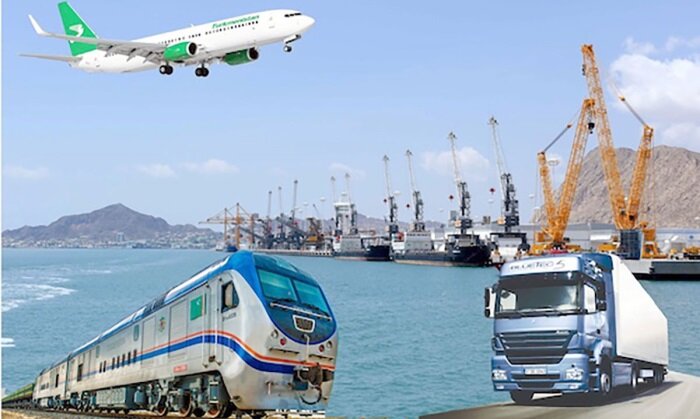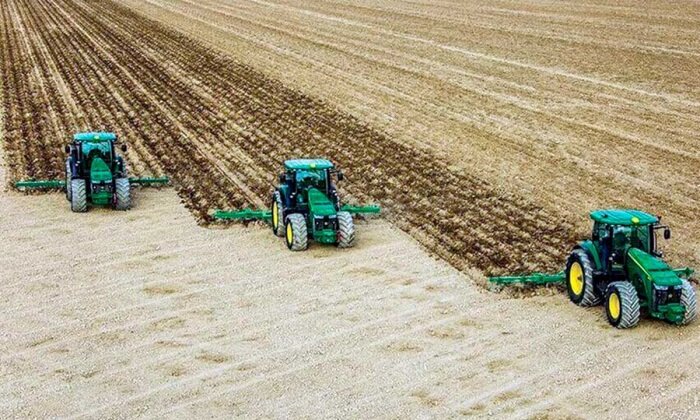A regular guest of the editorial office, the observer of Turkmenistan's economy Valentin Trapeznikov spoke about the high dynamics of development of the agro-industrial complex of the state.
 Geographical location, an abundance of sunlight and natural relief of Turkmenistan, make agriculture one of the key sectors of the national economy. On September 15, an economic expert on Turkmenistan Valentin Trapeznikov agreed to describe the favorable advantages of the agro-industrial complex of Turkmenistan for the readers of CentralAsia.news.
Geographical location, an abundance of sunlight and natural relief of Turkmenistan, make agriculture one of the key sectors of the national economy. On September 15, an economic expert on Turkmenistan Valentin Trapeznikov agreed to describe the favorable advantages of the agro-industrial complex of Turkmenistan for the readers of CentralAsia.news.
The main goal is food abundance
Agriculture has always been one of the leading sectors of the economy of Turkmenistan. According to the national State Statistics Committee, in the first half of 2020, its share in the country’s gross domestic product (GDP) was 9,2%. And that's without the agro-industrial processing.
At the same time, during the specified period, agriculture produced 7 billion manats of gross value added.
Good performance has been achieved in crop production. Thus, according to the results of the wheat harvest completed in July, the volume of its procurement amounted to more than 1475 thousand tons. It will satisfy internal needs and allow supplying individual shipments to the external market.
The collection of other types of products is ongoing. In January-Julу, the volume of production of vegetables amounted to 448.3 thousand tons, melons — 220.1 thousand tons, potatoes — 338.2 thousand tons, fruits and berries — 70.8 thousand tons.
Export demand is also satisfied
The produced volumes allow some of the products to be exported. First of all, these are vegetables and melons. The supply of tomatoes to the foreign market is growing especially intensively this year. In comparison to last year, both the physical volume and the cost of the exports doubled: in the first half of the year, more than 29.4 thousand tons were exported, worth almost 33 million dollars. Moreover, bell peppers and melons are also exported.
Success in the livestock is supported by private farmers
The production of livestock products — meat, milk, and eggs also grows. In comparison to last year, the increase in egg production reached 8,1%, ans that's 866 million pieces. It made it possible to resume the export. In the first half of the year, more than 20 million eggs were delivered to the external market.
It should be noted that the growth in livestock and crop production was mostly achieved thanks to the private agricultural producers.
Focus on the non-state sector
Representatives of the non-state sector of the economy also make a significant contribution to agro-industrial production. For the past seven months of this year, they rapidly increased the production of cotton fiber (an increase in comparison to the last year is 18,1%), cereals (90%), pasta (15.3%), meat, dairy, and other agricultural products.
Private producers are also actively involved in foreign trade, supplying fruit and vegetable juices; fruit and vegetable meat and fish canned food; confectionery, and other types of food to the external market in addition to the relevant products.
Contribution of machine operators
At present, preparation for the cotton harvest, sowing wheat next year is underway in the crop industry. In order to effectively carry out fieldwork, 1230 cotton harvesters, 11693 tractors, 5719 tractor cultivators, 1284 dusting machines, 2741 plows, 20 219 harrows, and other agricultural machinery are almost ready.
As reported by the ministry of agriculture, the volume of mechanized work on crop production amounted to more than 332 million manats for seven months of 2020.





